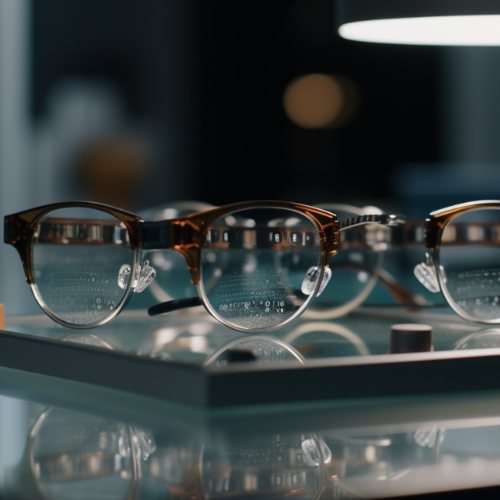As someone who requires vision correction for near and far distances, I found progressive lenses to be a game-changer. Progressive lenses offer a seamless transition between different prescription strengths, eliminating the need for multiple pairs of glasses or constant adjustments. However, I quickly learned that it is crucial to ensure my progressive lenses are correct to fully enjoy their benefits. In this comprehensive guide, I will share my experience and tips on how to tell if your progressive lenses are correct and what to do if they are not.
Understanding progressive lenses
Progressive lenses, also known as no-line bifocals or multifocal lenses, provide a continuous progression of lens powers to correct vision at varying distances. The top portion of the lens is for distance vision, the middle part is for intermediate distances (e.g., computer screens), and the bottom is for near or reading vision. Progressive lenses are designed to help you see clearly throughout the entire range of distances.
Ensuring the correct prescription
The first step in determining if my progressive lenses were correct was to verify that my prescription was accurate. If my prescription was outdated or incorrect, it could lead to discomfort, eyestrain, and blurry vision. To avoid this, I made sure to have a comprehensive eye exam with a licensed eye doctor at least once every two years or more frequently if recommended.
The importance of proper lens fitting
The next crucial factor in determining the correctness of my progressive lenses involved ensuring that I had properly fitted them. This process encompassed two main aspects: selecting the frame and positioning the lens.

Frame Selection: I found that the frame for my progressive lenses needs ample vertical space for different focal zones. Ideally, it should have a lens height of at least 30mm. Small or narrow frames, like cat eyes or retro wingtips, may not suit the lens design well, making it hard to find appropriate viewing areas for different distances.
Lens Positioning: Lens position within the frame is vital for optimal vision. My optician measured pupillary distance and fitting height to ensure lens alignment with my eyes. These measurements helped me see clearly and comfortably through each lens zone.
Navigating the adaptation period
When I first got my new progressive lenses, I experienced an adjustment period during which my brain adjusted to the new visual input. This took anywhere from a few days to a few weeks. During this time, I noticed mild distortion, blurry peripheral vision, or difficulty finding the right viewing zone for a specific distance. Gradually, these issues subsided as I became more comfortable with my new glasses.
Troubleshooting common issues
If you continue to experience discomfort or difficulty with your progressive lenses after the adaptation period, it may be necessary to reevaluate the prescription, fitting, or lens design.
Inaccurate Prescription: If your vision is blurry or you experience eye strain, headaches, or dizziness, your prescription might be inaccurate. In this case, consult your eye doctor for a reevaluation of your visual needs.
Improper Fitting: If your lenses are uncomfortable or you’re having trouble finding the appropriate viewing zone, your glasses might not be fitted correctly. Visit your optician to discuss potential adjustments to the frame, lens positioning, or measurements.
Lens Design: If you still experience issues after addressing the prescription and fitting, the progressive lens design might not be suitable for your needs. Discuss alternative progressive lens designs with your optician to find a solution that works best for you.
Regular check-ups and adjustments
To ensure my progressive lenses continued to provide optimal vision correction, I made it a habit to schedule regular check-ups with my eye doctor. These appointments allowed me to address any changes in my vision and make adjustments as needed. Moreover, I found it helpful to have my glasses professionally cleaned and adjusted periodically to maintain a comfortable fit and optimal lens alignment.
Patience and persistence
Throughout my journey with progressive lenses, I learned the importance of patience and persistence. It took time for my eyes and brain to adapt to the new lenses, and I encountered some challenges. However, by addressing any issues promptly and working closely with my eye care professional, I was able to enjoy the many benefits of progressive lenses, including clear vision at all distances and the convenience of not needing multiple pairs of glasses.
Managing blurry peripheral vision
One common issue that some progressive wearers experience is blurry peripheral vision due to the lens shape. To minimize this, I found that selecting a larger lens with rounded edges and ensuring the correct pupillary distance measurement helped improve my peripheral vision.
Lens positioning and fitting issues
If you find your progressive lenses still blurry, consider the possibility that they might not be fitted correctly or that the lens positioning could be incorrect. Adjust your nose pads properly, ensuring your pupils are at the right height within the lens. Furthermore, always maintain a natural posture with your head and eyes when using your progressive glasses.
Trying different-sized frames
If you still experience blurred vision or discomfort with your progressive lenses, consider experimenting with different-sized frames to better accommodate the various reading zones. By trying larger or shorter frames, you could find the perfect fit for better focus and movement patterns.
Final thought
From my experience, confirming the correctness of my progressive lenses involves ensuring an accurate prescription, and proper fit and giving myself time to adapt. If I run into any issues or discomfort, I’m proactive in troubleshooting and resolving them with my optician’s help.
By sticking to this routine and keeping up with regular check-ups, I’m now reaping the full benefits of my progressive lenses. They’ve become an integral part of my daily life. If you’re considering progressive lenses or having trouble with your current pair, remember patience and persistence are key. Work closely with your optometrist to find the best solution for your vision needs.
